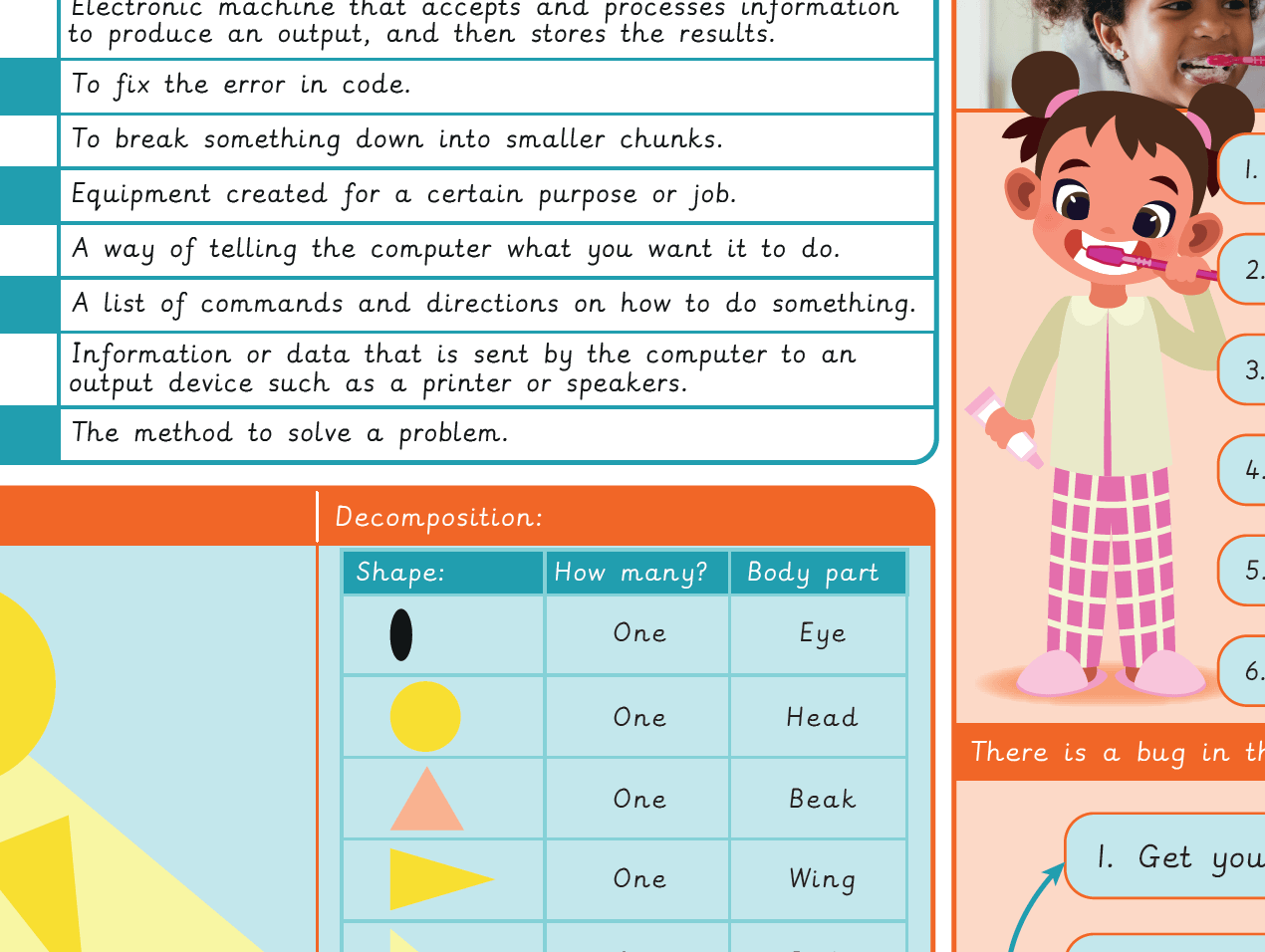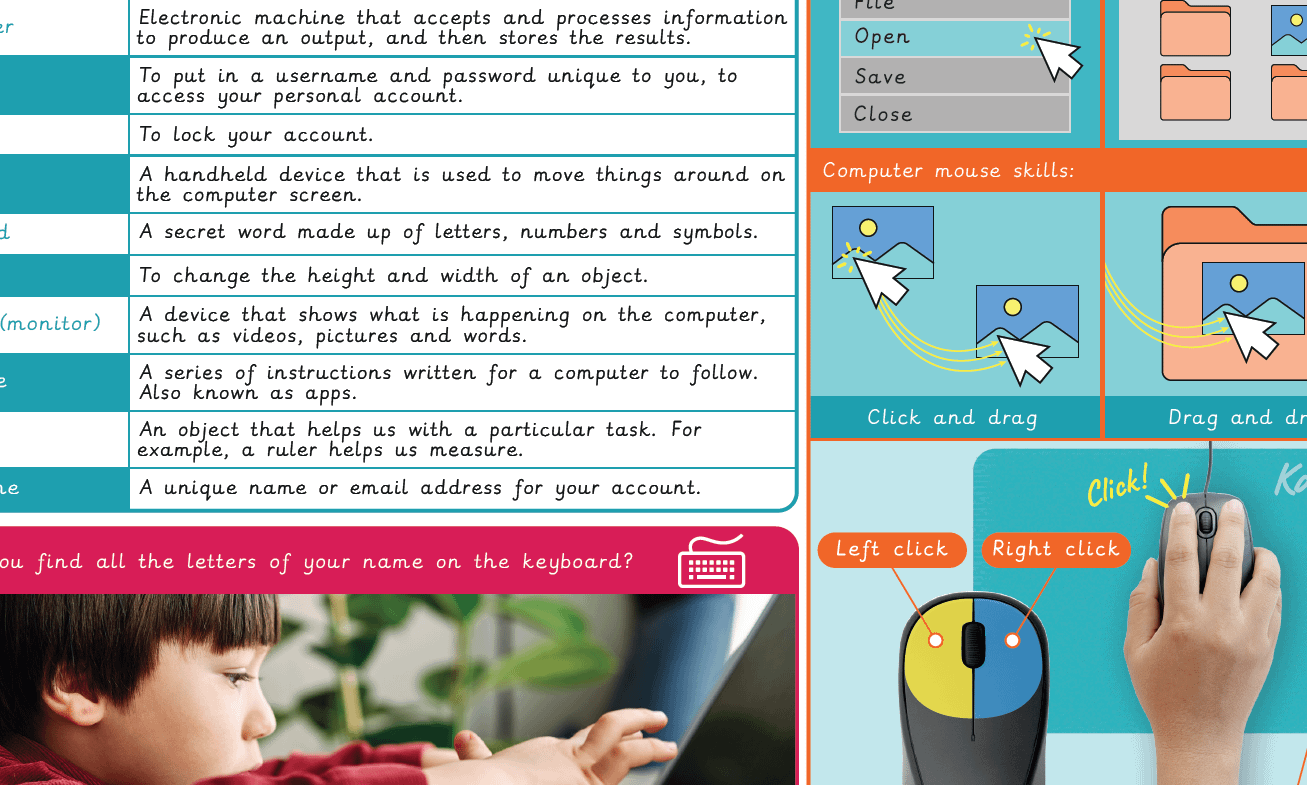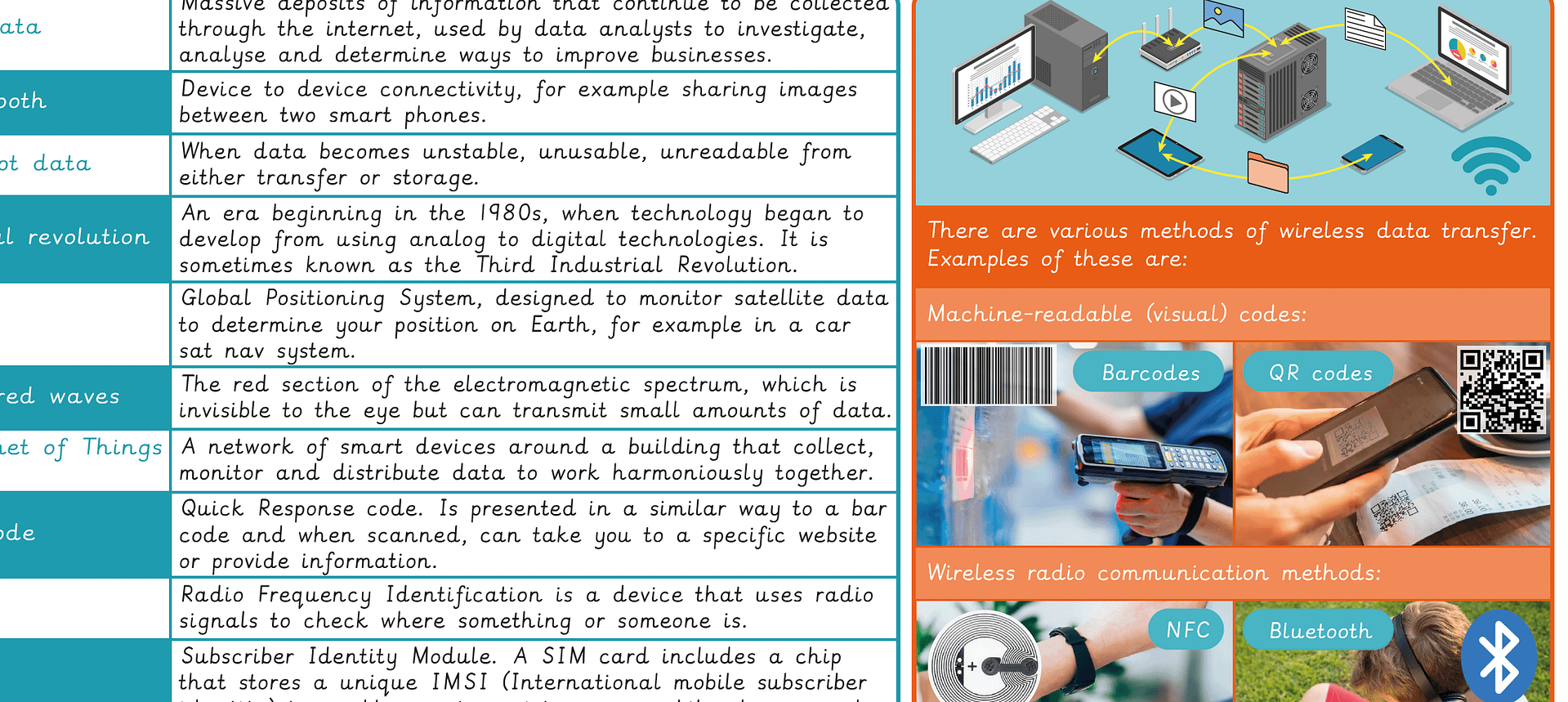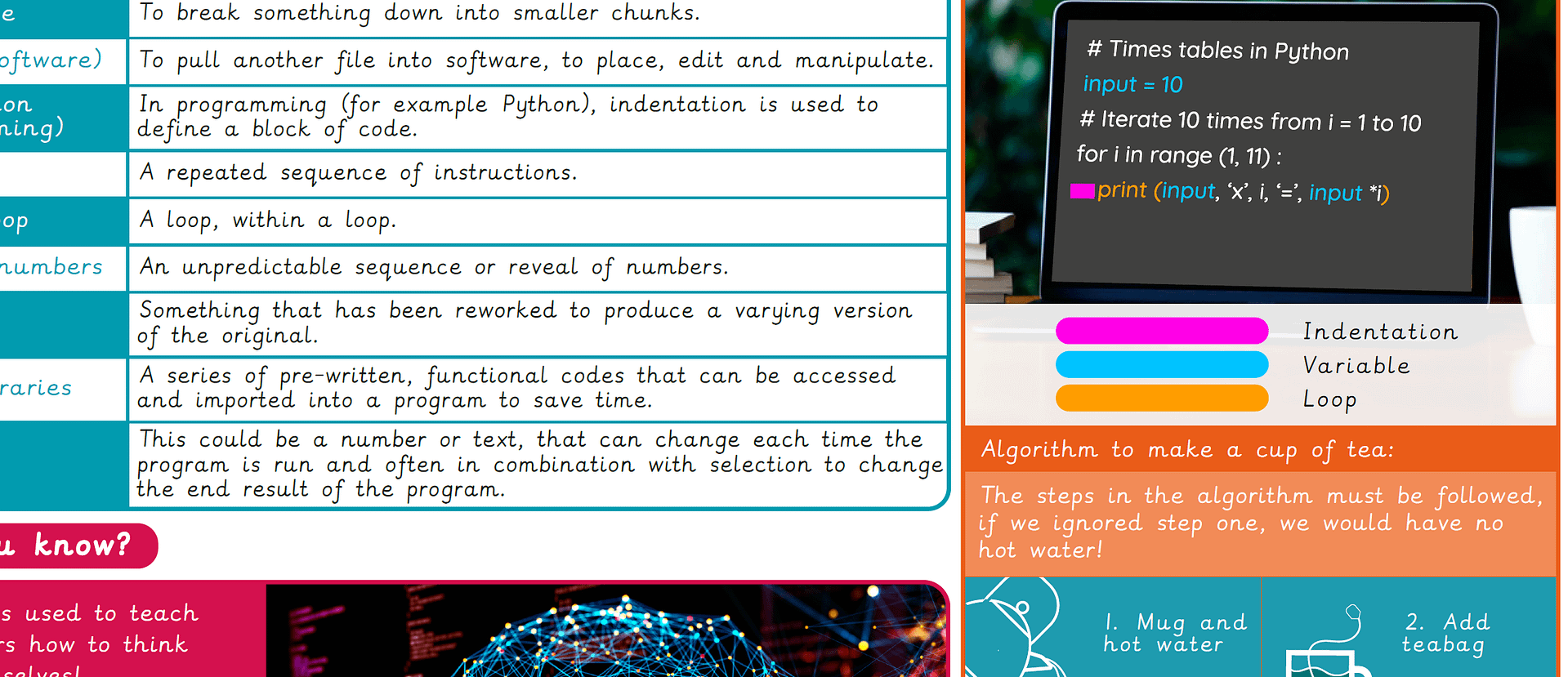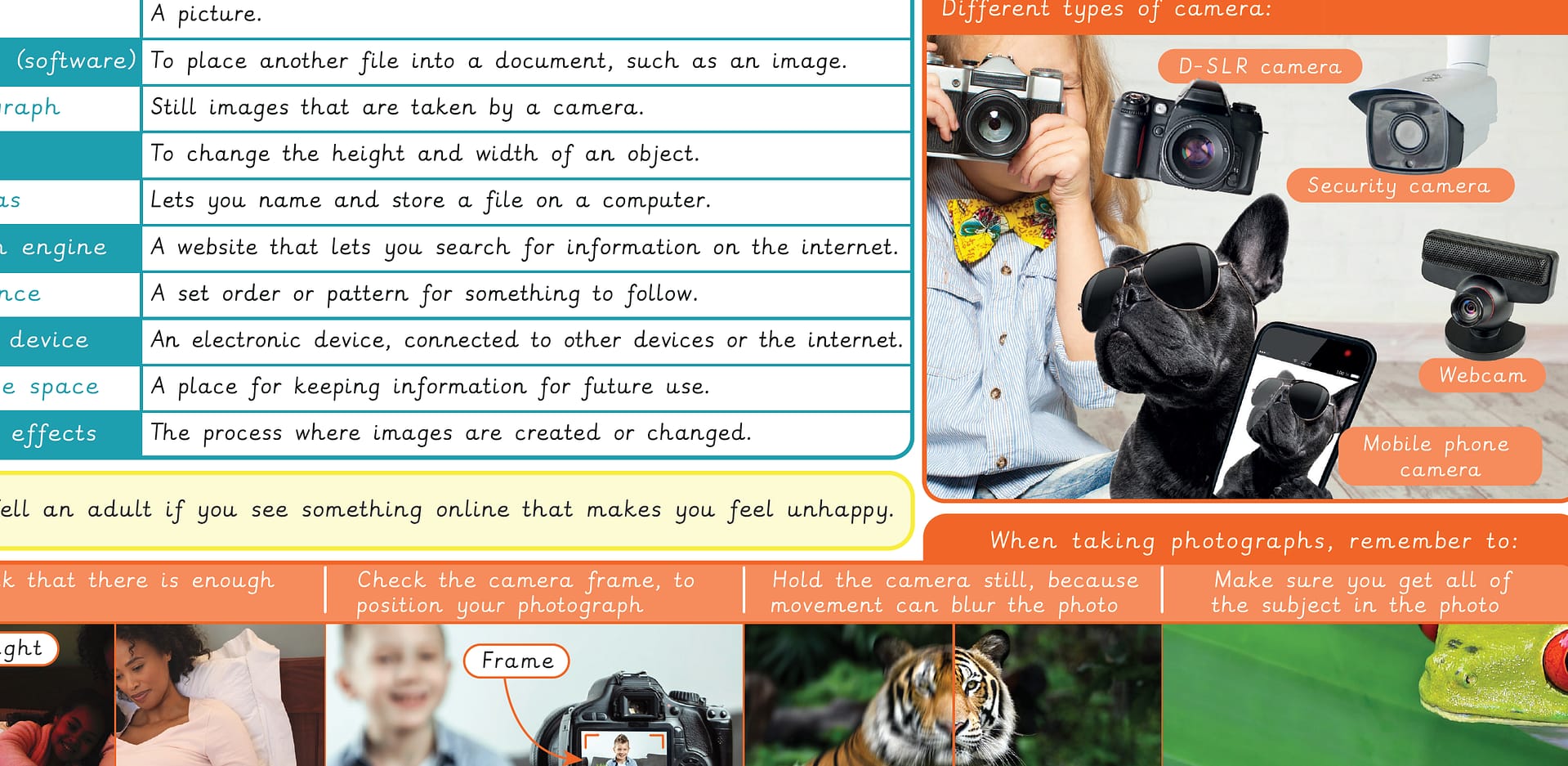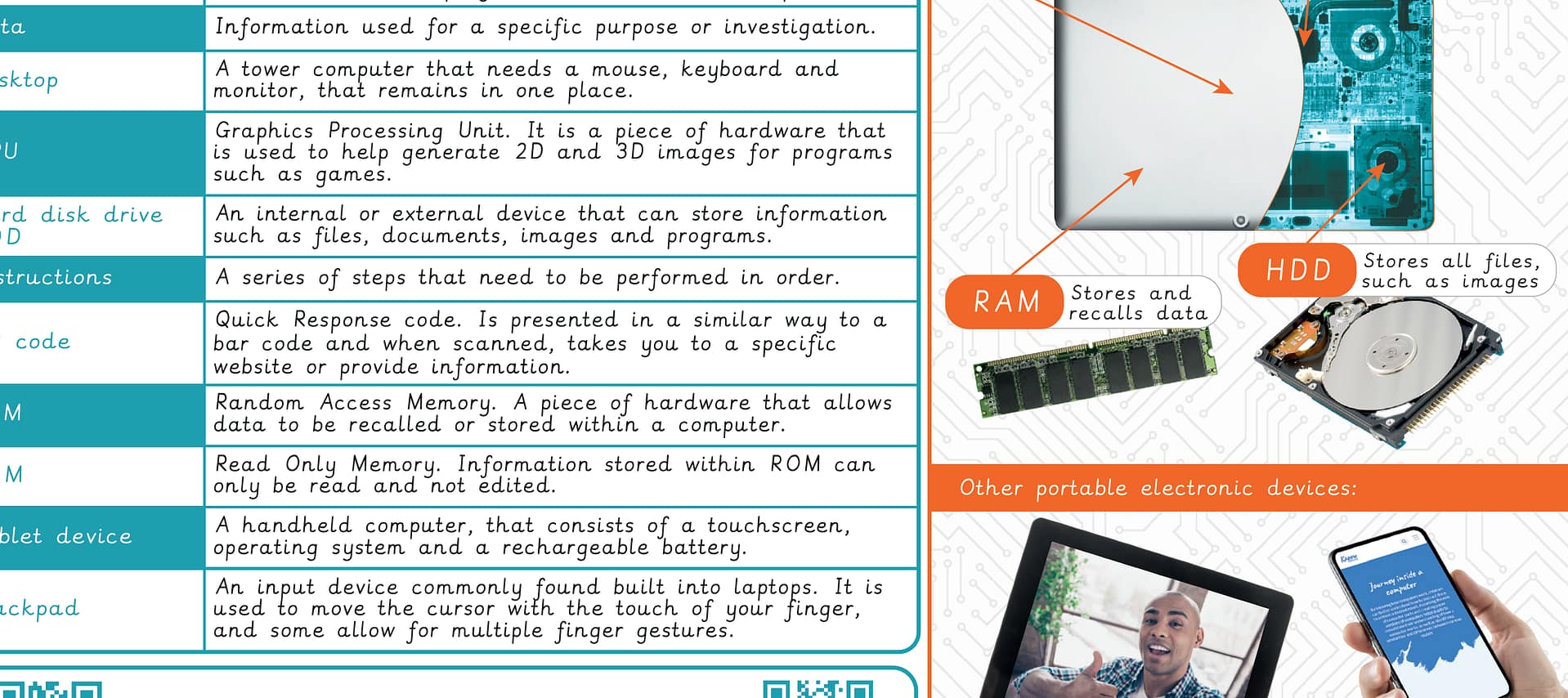Featured Document Type: Knowledge organiser
Knowledge organiser – Computing Y1: Introduction to data
Knowledge organiser – Computing Y1: Computing systems and networks: Improving mouse skills
Knowledge Organiser – Computing Y6: Data Handling 2: Big Data 2
Knowledge organiser – Computing Y4: Investigating weather
Knowledge organiser – Computing Y6: Intro to Python
Knowledge organiser: Computing – Y1 Digital imagery
A knowledge organiser that captures the essential knowledge and skills learnt throughout the unit Computing, Year 1, Digital Imagery
This resource is designed to support pupils as they explore the fundamentals of digital photography and image editing. It introduces key vocabulary and concepts, such as camera types, framing, lighting, and basic editing techniques like cropping and resizing. and the importance of sequencing images to tell a story as well as safe online practices when handling digital content. It is perfect for consolidating essential knowledge, enhancing digital literacy, and fostering creativity in working with digital imagery.
Knowledge Organiser: Computing – Y3 Journey inside a computer
A Knowledge organiser that captures the essential knowledge and skills learnt throughout the unit Computing, Year 3, Journey inside a computer.
This resource introduces pupils to the key components and functions of a computer system. It highlights important vocabulary such as input, output, processing, and storage, and outlines how data travels through hardware components. This unit is ideal for supporting pupils’ understanding of digital systems, and helps embed core computing knowledge, build technical confidence, and lay the foundation for future learning in computer science.
Knowledge organiser: Computing – Y2 What is a computer?
A Knowledge organiser that captures the essential knowledge and skills learnt throughout the unit Computing, Year 2, Computing systems and networks 1: What is a computer?
This Computing resource is designed to help learners understand what a computer is and how its different components function together. It introduces children to key hardware elements such as the mouse, keyboard, and monitor, and explains their roles within a system. The organiser also highlights the difference between inputs and outputs and supports pupils to identify devices used in everyday life. This resource is ideal for reinforcing foundational knowledge and developing digital literacy.

